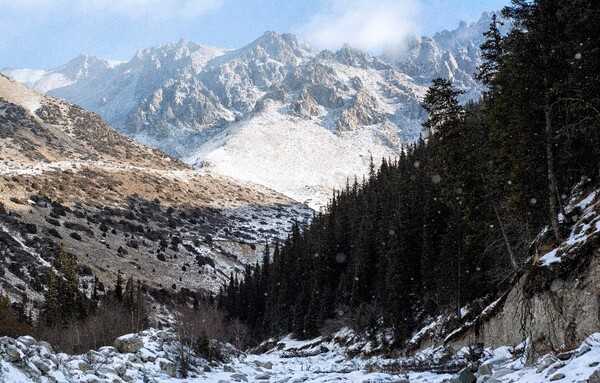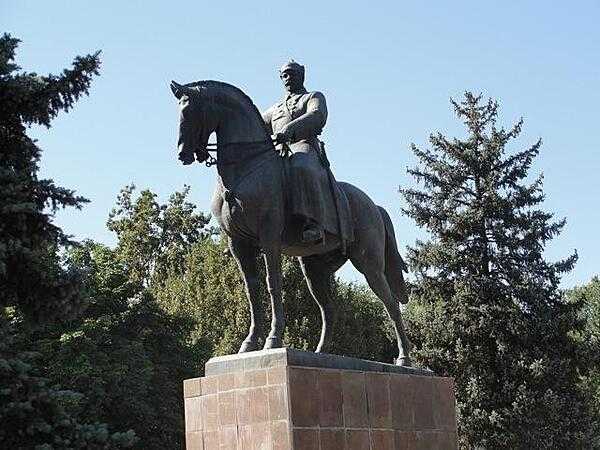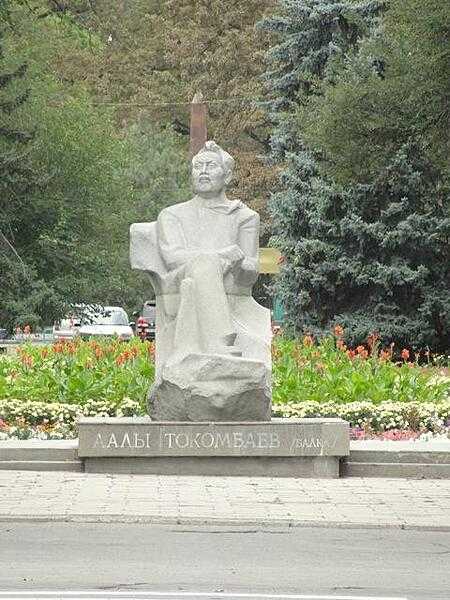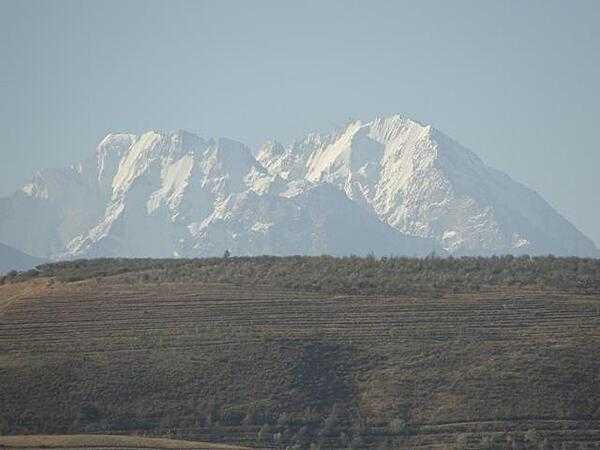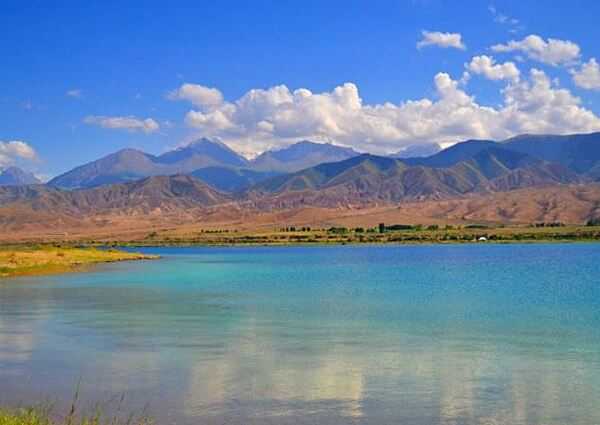Kyrgyzstan - KG - KGZ - KGZ - Central Asia
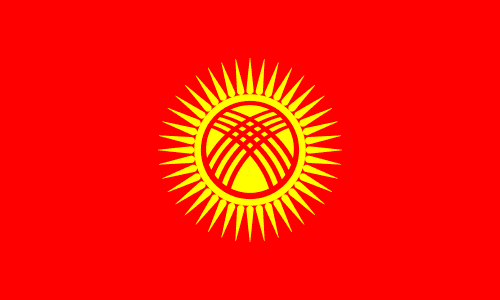

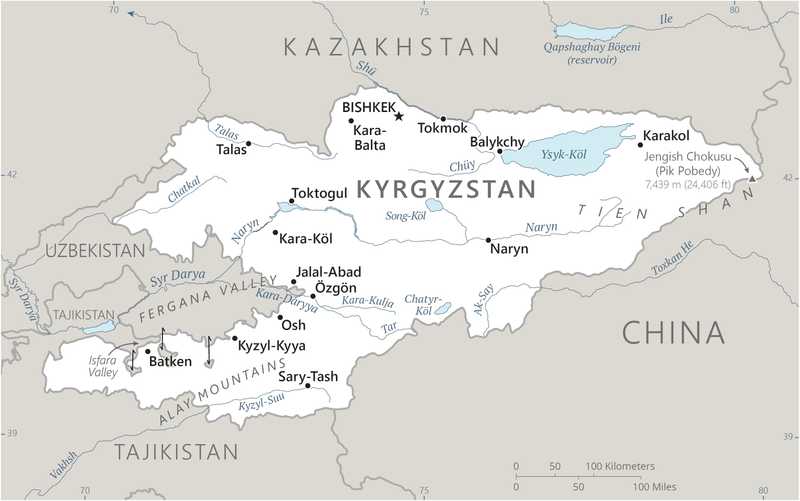
Kyrgyzstan Images
Kyrgyzstan Factbook Data
Diplomatic representation from the US
embassy: 171 Prospect Mira, Bishkek 720016
mailing address: 7040 Bishkek Place, Washington DC 20521-7040
telephone: [996] (312) 597-000
FAX: [996] (312) 597-744
email address and website:
ConsularBishkek@state.gov
https://kg.usembassy.gov/
Age structure
15-64 years: 64% (male 1,935,200/female 2,013,733)
65 years and over: 6.9% (2024 est.) (male 164,032/female 263,805)
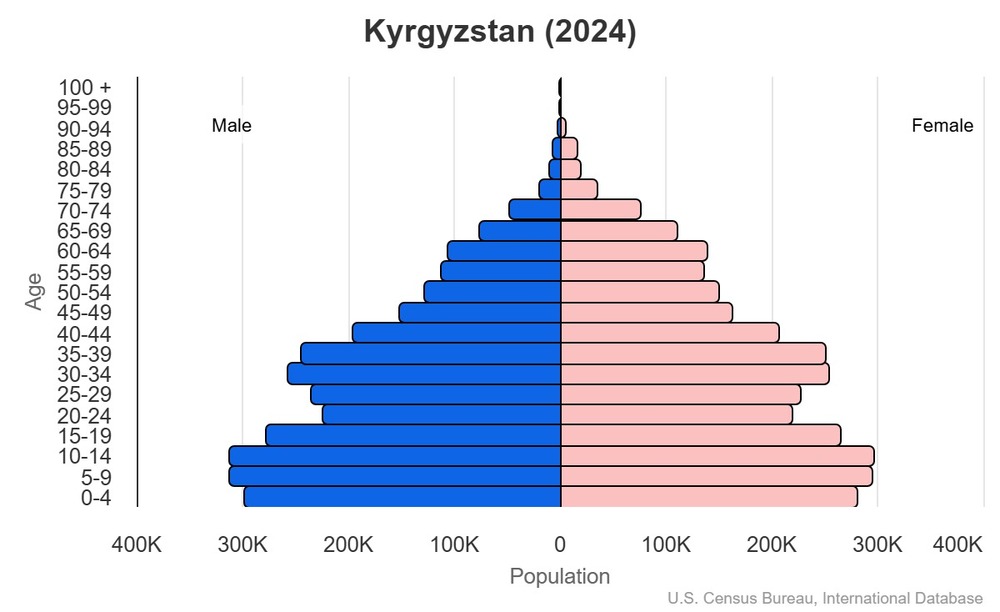
For additional information, please see the entry for Population pyramid on the Definitions and Notes page.
Geographic coordinates
Sex ratio
0-14 years: 1.06 male(s)/female
15-64 years: 0.96 male(s)/female
65 years and over: 0.62 male(s)/female
total population: 0.96 male(s)/female (2024 est.)
Natural hazards
Area - comparative
Military service age and obligation
Background
Kyrgyzstan is a Central Asian country of incredible natural beauty and proud nomadic traditions. The Russian Empire annexed most of the territory of present-day Kyrgyzstan in 1876. The Kyrgyz staged a major revolt against the Tsarist Empire in 1916, during which almost one-sixth of the Kyrgyz population was killed. Kyrgyzstan became a Soviet republic in 1926 and achieved independence in 1991 when the USSR dissolved. Nationwide demonstrations in 2005 and 2010 resulted in the ouster of the country’s first two presidents, Askar AKAEV and Kurmanbek BAKIEV. Almazbek ATAMBAEV was sworn in as president in 2011. In 2017, ATAMBAEV became the first Kyrgyzstani president to serve a full term and respect constitutional term limits, voluntarily stepping down at the end of his mandate. Former prime minister and ruling Social-Democratic Party of Kyrgyzstan member Sooronbay JEENBEKOV replaced him after winning the 2017 presidential election, which was the most competitive in the country’s history despite reported cases of vote buying and abuse of public resources.
In 2020, protests against parliamentary election results spread across Kyrgyzstan, leading to JEENBEKOV’s resignation and catapulting previously imprisoned Sadyr JAPAROV to acting president. In 2021, Kyrgyzstanis formally elected JAPAROV as president and approved a referendum to move Kyrgyzstan from a parliamentary to a presidential system. In 2021, Kyrgyzstanis voted in favor of constitutional changes that consolidated power in the presidency. Pro-government parties won a majority in the 2021 legislative elections. Continuing concerns for Kyrgyzstan include the trajectory of democratization, endemic corruption, tense regional relations, vulnerabilities due to climate change, border security vulnerabilities, and potential terrorist threats.
Environmental issues
International environmental agreements
signed, but not ratified: none of the selected agreements
Military expenditures
3.5% of GDP (2023 est.)
3% of GDP (2022 est.)
2.8% of GDP (2021 est.)
3% of GDP (2020 est.)
Population below poverty line
note: % of population with income below national poverty line
Household income or consumption by percentage share
highest 10%: 22% (2022 est.)
note: % share of income accruing to lowest and highest 10% of population
Exports - commodities
note: top five export commodities based on value in dollars
Exports - partners
note: top five export partners based on percentage share of exports
Administrative divisions
note: administrative divisions have the same names as their administrative centers; exceptions show the administrative center name in parentheses
Agricultural products
note: top ten agricultural products based on tonnage
Military and security forces
Ministry of Internal Affairs: Internal Security Service
State Committee for National Security: Border Guard Service (2025)
note: the National Guard’s missions include counterterrorism, responding to emergencies, and the protection of government facilities
Budget
expenditures: $4.452 billion (2023 est.)
note: central government revenues (excluding grants) and expenditures converted to US dollars at average official exchange rate for year indicated
Capital
geographic coordinates: 42 52 N, 74 36 E
time difference: UTC+6 (11 hours ahead of Washington, DC, during Standard Time)
etymology: the meaning of the name is unknown; the city was founded in 1862 as a Russian settlement on the site of an Uzbek fortress named Bishkek; the Russian version of the name was Pishpek, and the original name only came back into use in 1991
Imports - commodities
note: top five import commodities based on value in dollars
Climate
Coastline
Constitution
amendment process: proposed as a draft law by the majority of the Supreme Council membership or by petition of 300,000 voters; passage requires at least two-thirds majority vote of the Council membership in each of at least three readings of the draft two months apart; the draft may be submitted to a referendum if approved by two thirds of the Council membership; adoption requires the signature of the president
Exchange rates
Exchange rates:
87.15 (2024 est.)
87.856 (2023 est.)
84.116 (2022 est.)
84.641 (2021 est.)
77.346 (2020 est.)
Executive branch
head of government: Chairman of the Cabinet of Ministers Adylbek KASYMALIYEV (since 18 December 2024)
cabinet: Cabinet of Ministers appointed by the president
election/appointment process: president directly elected by absolute-majority popular vote in 2 rounds, if needed, for a five-year term (eligible for a second term)
most recent election date: 10 January 2021
election results:
2021: Sadyr JAPAROV elected president in first round; percent of vote - Sadyr JAPAROV (Mekenchil) 79.2%, Adakhan MADUMAROV (United Kyrgyzstan) 6.8%, other 14%
2017: Sooronbay JEENBEKOV elected president; Sooronbay JEENBEKOV (Social Democratic Party of Kyrgyzstan) 54.7%, Omurbek BABANOV (independent) 33.8%, Adakhan MADUMAROV (United Kyrgyzstan) 6.6%, other 4.9%
expected date of next election: 2027
note: the president is both chief of state and head of government
Flag
meaning: the sun's rays represent the Kyrgyz tribes; red stands for bravery and valor, and the sun for peace and wealth
Independence
Industries
Judicial branch
judge selection and term of office: Supreme Court and Constitutional Court judges appointed by the Supreme Council on the recommendation of the president; Supreme Court judges serve for 10 years, Constitutional Court judges serve for 15 years; mandatory retirement at age 70 for judges of both courts
subordinate courts: Higher Court of Arbitration; oblast (provincial) and city courts
Land boundaries
border countries (4): China 1,063 km; Kazakhstan 1,212 km; Tajikistan 984 km; Uzbekistan 1,314 km
Land use
arable land: 6.7% (2023 est.)
permanent crops: 0.4% (2023 est.)
permanent pasture: 46.9% (2023 est.)
forest: 6.5% (2023 est.)
other: 39.4% (2023 est.)
Legal system
Legislative branch
legislative structure: unicameral
number of seats: 90 (all directly elected)
electoral system: other systems
scope of elections: full renewal
term in office: 5 years
most recent election date: 11/30/2025
parties elected and seats per party: Ata-Jurt Kyrgyzstan (Fatherland) (15); Ishenim (Trust) (12); Yntymak (Harmony) (9); Alyans (Alliance) (7); Butun Kyrgyzstan (United) (6); Yiman Nuru (Ray of Faith) (5); Independents (34)
percentage of women in chamber: 22.2%
expected date of next election: November 2030
Maritime claims
International organization participation
National holiday
Nationality
adjective: Kyrgyzstani
Natural resources
Geography - note
Economic overview
Political parties
Alliance
Cohesion
Fatherland Kyrgyzstan
Ishenim
Light of Faith
Mekenchil
Social Democrats or SDK
United Kyrgyzstan
Railways
broad gauge: 424 km (2018) 1.520-m gauge
Suffrage
Terrain
Government type
Country name
conventional short form: Kyrgyzstan
local long form: Kyrgyz Respublikasy
local short form: Kyrgyzstan
etymology: named for the local Kyrgyz people, with "-stan" coming from the Persian word ostan, meaning "country;" the Kyrgyz name may derive from the Turkic root words kir, or "steppe," and gismek, "to wander;" the name is traditionally said to come from a combination of the Turkic words kyrg (forty) and -is (hundred), based on a tale about two tribes and the number of their tents
Location
Map references
Irrigated land
Internet users
Internet country code
Refugees and internally displaced persons
IDPs: 12 (2024 est.)
stateless persons: 925 (2024 est.)
GDP (official exchange rate)
note: data in current dollars at official exchange rate
Total renewable water resources
School life expectancy (primary to tertiary education)
male: 12 years (2024 est.)
female: 13 years (2024 est.)
Urbanization
rate of urbanization: 2.05% annual rate of change (2020-25 est.)
Broadcast media
Drinking water source
urban: 99.2% of population (2022 est.)
rural: 85.8% of population (2022 est.)
total: 90.8% of population (2022 est.)
unimproved:
urban: 0.8% of population (2022 est.)
rural: 14.2% of population (2022 est.)
total: 9.2% of population (2022 est.)
National anthem(s)
lyrics/music: Djamil SADYKOV and Eshmambet KULUEV/Nasyr DAVLESOV and Kalyi MOLDOBASANOV
history: adopted 1992
Major urban areas - population
International law organization participation
Physician density
Hospital bed density
National symbol(s)
Mother's mean age at first birth
GDP - composition, by end use
government consumption: 16% (2023 est.)
investment in fixed capital: 22% (2023 est.)
investment in inventories: 12.5% (2023 est.)
exports of goods and services: 36.9% (2023 est.)
imports of goods and services: -95.5% (2023 est.)
note: figures may not total 100% due to rounding or gaps in data collection
Dependency ratios
youth dependency ratio: 45.5 (2024 est.)
elderly dependency ratio: 10.8 (2024 est.)
potential support ratio: 9.2 (2024 est.)
Citizenship
citizenship by descent only: at least one parent must be a citizen of Kyrgyzstan
dual citizenship recognized: yes, but only if a mutual treaty on dual citizenship is in force
residency requirement for naturalization: 5 years
Population distribution
Electricity access
electrification - urban areas: 100%
electrification - rural areas: 99.6%
Civil aircraft registration country code prefix
Sanitation facility access
urban: 100% of population (2022 est.)
rural: 100% of population (2022 est.)
total: 100% of population (2022 est.)
unimproved:
urban: 0% of population (2022 est.)
rural: 0% of population (2022 est.)
total: 0% of population (2022 est.)
Ethnic groups
Religions
Languages
major-language sample(s):
Дүйнөлүк фактылар китеби, негизги маалыматтын маанилүү булагы. (Kyrgyz)
The World Factbook, the indispensable source for basic information.
Imports - partners
note: top five import partners based on percentage share of imports
Elevation
lowest point: Kara-Daryya (Karadar'ya) 132 m
mean elevation: 2,988 m
Health expenditure
7.6% of national budget (2022 est.)
Military - note
Kyrgyzstan has been a member of CSTO since 1994 and contributes troops to CSTO's rapid reaction force; it also started a relationship with NATO in 1992 and joined NATO's Partnership for Peace program in 1994 (2025)
Military and security service personnel strengths
Terrorist group(s)
Total water withdrawal
industrial: 336 million cubic meters (2022 est.)
agricultural: 7.1 billion cubic meters (2022 est.)
Waste and recycling
percent of municipal solid waste recycled: 14.6% (2022 est.)
Trafficking in persons
Major watersheds (area sq km)
Major lakes (area sq km)
note - second largest saline lake after the Caspian Sea; second highest mountain lake after Lake Titicaca; it is an endorheic mountain basin; although surrounded by snow capped mountains it never freezes
Major rivers (by length in km)
note: [s] after country name indicates river source; [m] after country name indicates river mouth
National heritage
selected World Heritage Site locales: Sulaiman-Too Sacred Mountain (c); Silk Roads: the Chang'an-Tianshan Corridor (c); Western Tien Shan (n)
Child marriage
women married by age 18: 12.9% (2018)
Coal
consumption: 4.212 million metric tons (2023 est.)
exports: 1.672 million metric tons (2023 est.)
imports: 1.443 million metric tons (2023 est.)
proven reserves: 28.499 billion metric tons (2023 est.)
Electricity generation sources
hydroelectricity: 85.7% of total installed capacity (2023 est.)
Natural gas
consumption: 435.336 million cubic meters (2023 est.)
imports: 406.698 million cubic meters (2023 est.)
proven reserves: 5.663 billion cubic meters (2021 est.)
Petroleum
refined petroleum consumption: 31,000 bbl/day (2023 est.)
crude oil estimated reserves: 40 million barrels (2021 est.)
Currently married women (ages 15-49)
Remittances
26.6% of GDP (2022 est.)
32.6% of GDP (2021 est.)
note: personal transfers and compensation between resident and non-resident individuals/households/entities
National color(s)
National coat of arms
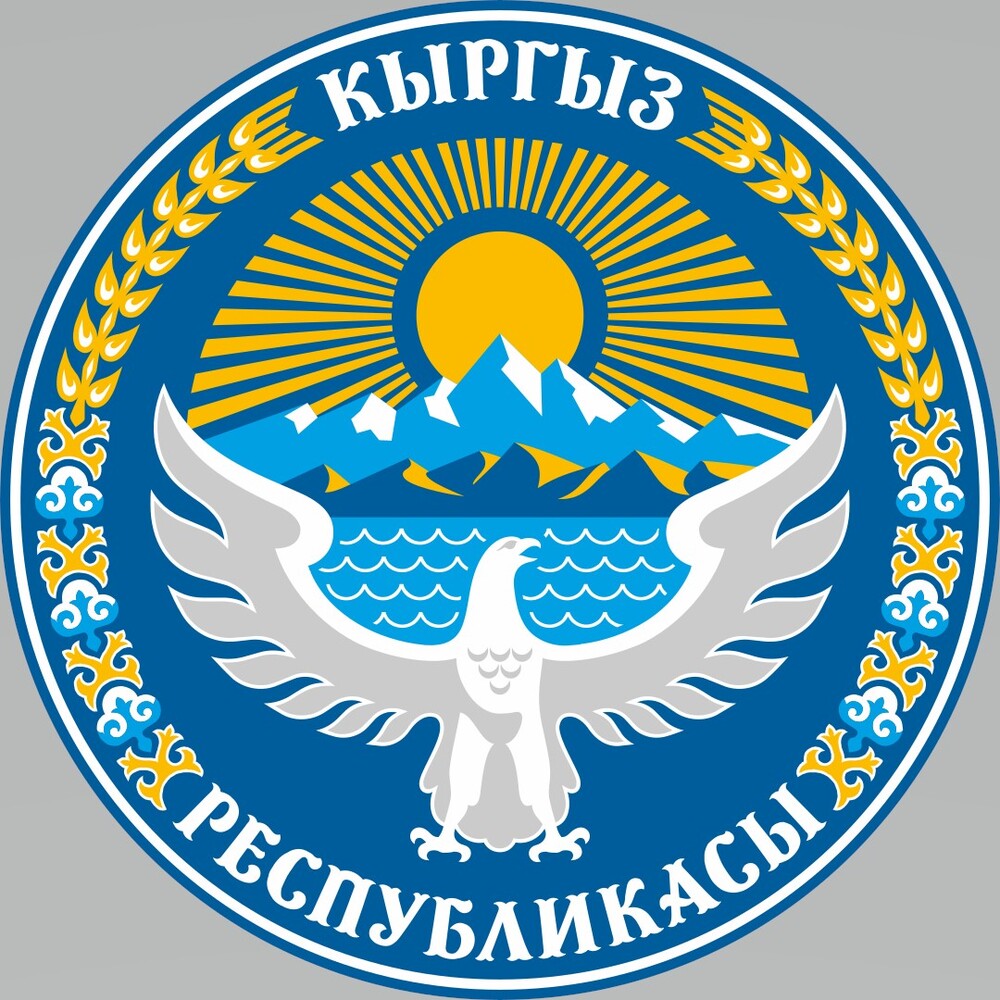
Particulate matter emissions
Labor force
note: number of people ages 15 or older who are employed or seeking work
Youth unemployment rate (ages 15-24)
male: 6.3% (2024 est.)
female: 7.7% (2024 est.)
note: % of labor force ages 15-24 seeking employment
Debt - external
note: present value of external debt in current US dollars
Maternal mortality ratio
Reserves of foreign exchange and gold
$3.237 billion (2023 est.)
$2.799 billion (2022 est.)
note: holdings of gold (year-end prices)/foreign exchange/special drawing rights in current dollars
Public debt
note: central government debt as a % of GDP
Unemployment rate
4% (2023 est.)
4.1% (2022 est.)
note: % of labor force seeking employment
Population
male: 3,021,318
female: 3,150,783
Carbon dioxide emissions
from coal and metallurgical coke: 6.301 million metric tonnes of CO2 (2023 est.)
from petroleum and other liquids: 4.234 million metric tonnes of CO2 (2023 est.)
from consumed natural gas: 854,000 metric tonnes of CO2 (2023 est.)
Area
land: 191,801 sq km
water: 8,150 sq km
Taxes and other revenues
note: central government tax revenue as a % of GDP
Real GDP (purchasing power parity)
$46.686 billion (2023 est.)
$42.826 billion (2022 est.)
note: data in 2021 dollars
Airports
Gini Index coefficient - distribution of family income
note: index (0-100) of income distribution; higher values represent greater inequality
Inflation rate (consumer prices)
13.9% (2022 est.)
11.9% (2021 est.)
note: annual % change based on consumer prices
Current account balance
-$737.696 million (2021 est.)
$374.257 million (2020 est.)
note: balance of payments - net trade and primary/secondary income in current dollars
Real GDP per capita
$6,600 (2023 est.)
$6,100 (2022 est.)
note: data in 2021 dollars
Broadband - fixed subscriptions
subscriptions per 100 inhabitants: 6 (2023 est.)
Tobacco use
male: 50.7% (2025 est.)
female: 3.1% (2025 est.)
Obesity - adult prevalence rate
Energy consumption per capita
Electricity
consumption: 14.872 billion kWh (2023 est.)
exports: 428.01 million kWh (2023 est.)
imports: 3.929 billion kWh (2023 est.)
transmission/distribution losses: 2.363 billion kWh (2023 est.)
Children under the age of 5 years underweight
Imports
$5.928 billion (2021 est.)
$4.051 billion (2020 est.)
note: balance of payments - imports of goods and services in current dollars
Exports
$3.292 billion (2021 est.)
$2.435 billion (2020 est.)
note: balance of payments - exports of goods and services in current dollars
Heliports
Telephones - fixed lines
subscriptions per 100 inhabitants: 3 (2023 est.)
Alcohol consumption per capita
beer: 0.43 liters of pure alcohol (2019 est.)
wine: 0.23 liters of pure alcohol (2019 est.)
spirits: 3.35 liters of pure alcohol (2019 est.)
other alcohols: 0 liters of pure alcohol (2019 est.)
Life expectancy at birth
male: 68.9 years
female: 77.2 years
Real GDP growth rate
9% (2023 est.)
9% (2022 est.)
note: annual GDP % growth based on constant local currency
Industrial production growth rate
note: annual % change in industrial value added based on constant local currency
GDP - composition, by sector of origin
industry: 24.7% (2024 est.)
services: 52.1% (2024 est.)
note: figures may not total 100% due to non-allocated consumption not captured in sector-reported data
Education expenditure
19.6% national budget (2024 est.)
Military equipment inventories and acquisitions
Diplomatic representation in the US
chancery: 2360 Massachusetts Avenue NW, Washington, DC 20008
telephone: [1] (202) 449-9822
FAX: [1] (202) 449-8275
email address and website:
kgembassy.usa@mfa.gov.kg
Embassy of the Kyrgyz Republic in the USA and Canada (mfa.gov.kg)
Gross reproduction rate
Net migration rate
Median age
male: 26.9 years
female: 29.8 years
Total fertility rate
Infant mortality rate
male: 28.6 deaths/1,000 live births
female: 20.2 deaths/1,000 live births
Telephones - mobile cellular
subscriptions per 100 inhabitants: 130 (2021 est.)
